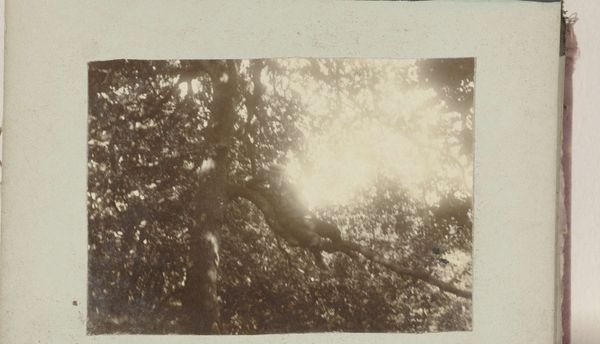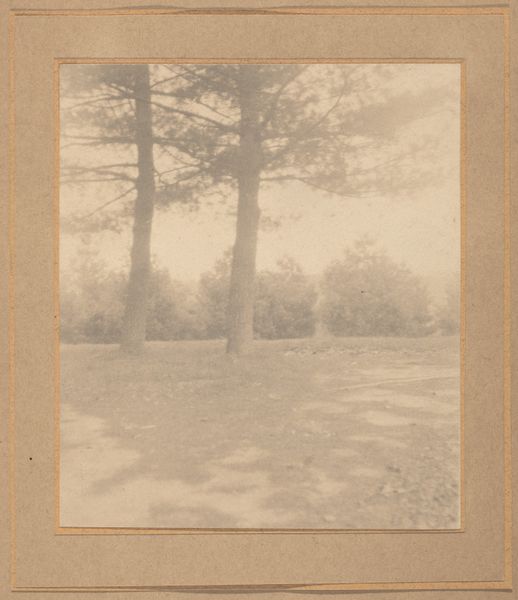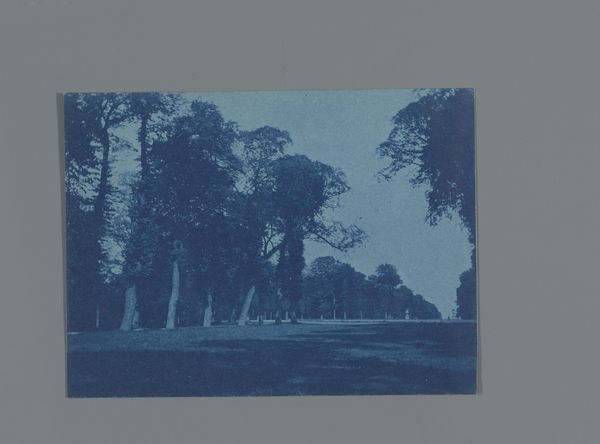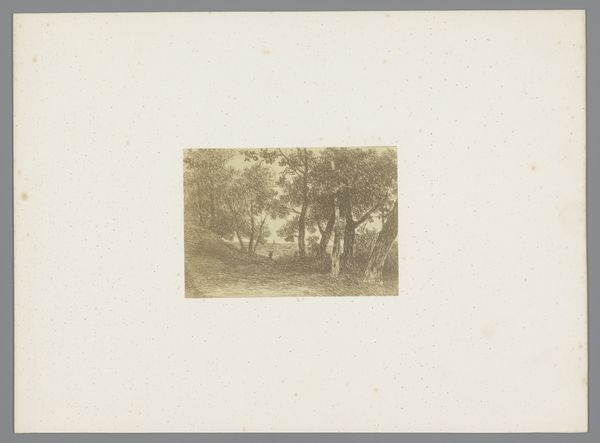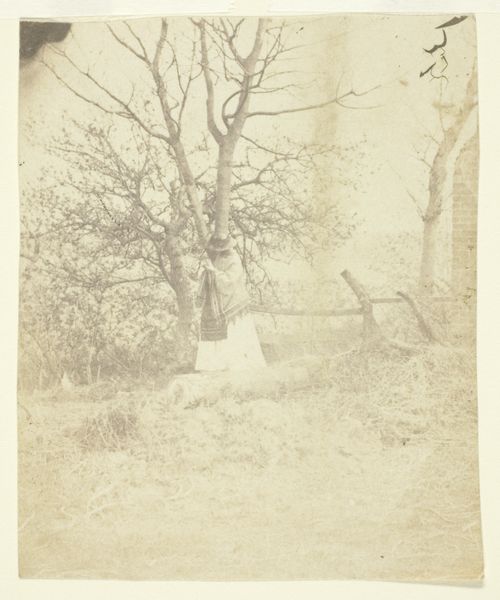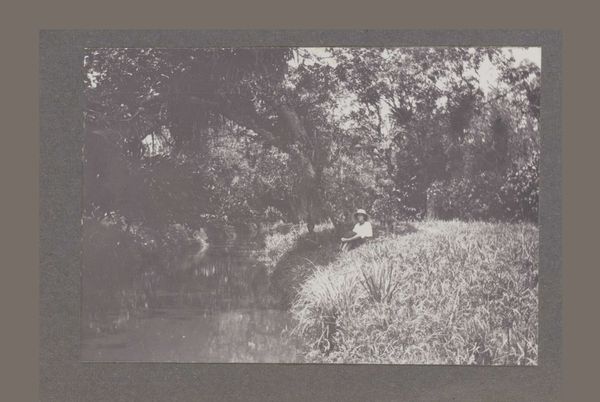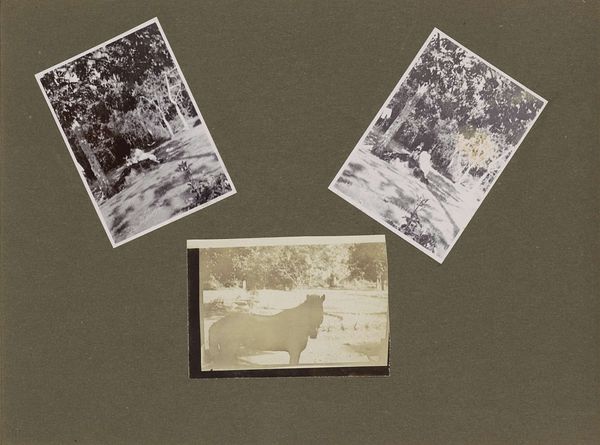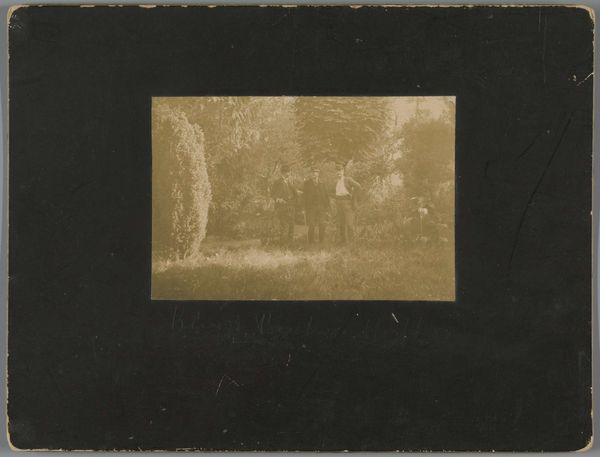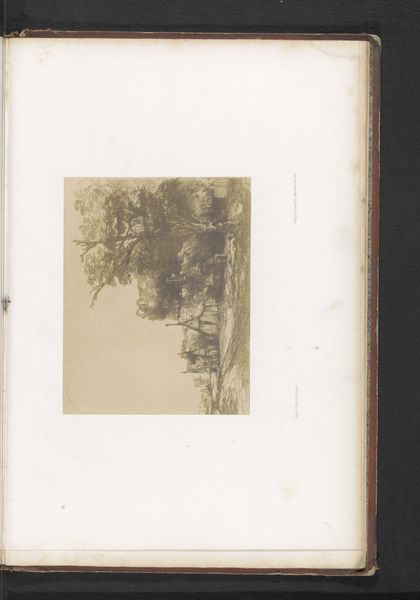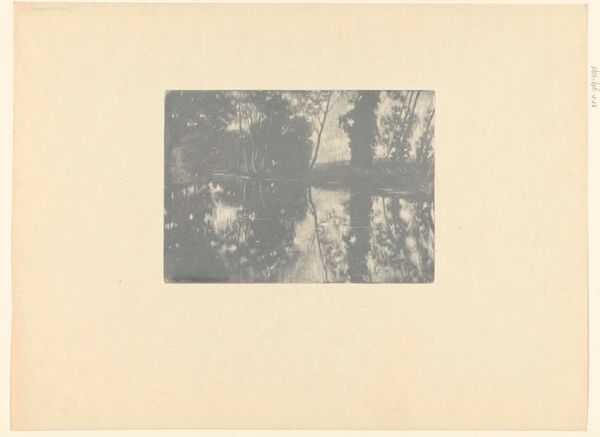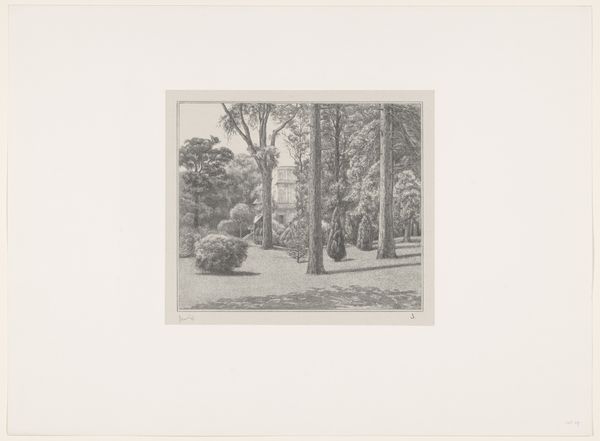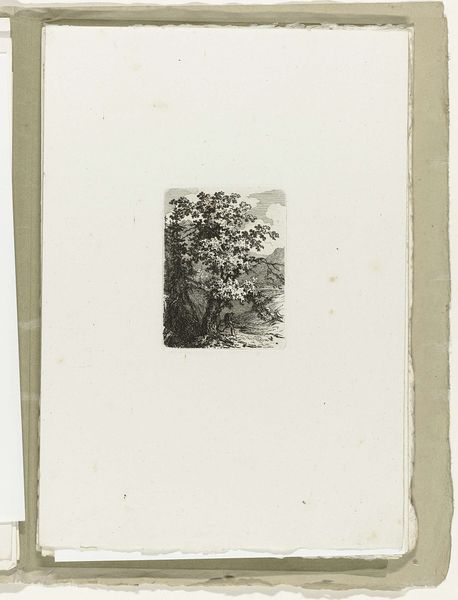
Dimensions: height 58 mm, width 90 mm
Copyright: Rijks Museum: Open Domain
Curator: Looking at Johanna Margaretha Piek's gelatin-silver print, "Landschap met bomen," created between 1889 and 1893, one immediately notes its ethereal quality. Editor: Yes, there's a softness to it, almost dreamlike. The muted tones and hazy light lend it an air of tranquility. What kind of societal values shaped the artistic practice during that era? Curator: Late 19th-century photography was deeply entwined with ideas of progress and social documentation, but it also mirrored a burgeoning interest in personal and emotional expression, reflecting the romanticism and subjectivity found in painting. Think of women photographers like Piek; their entry into artistic spheres represents emerging narratives around gender and creative agency, especially during an era marked by restrictive social norms. Editor: So the choice to focus on a landscape itself becomes a statement? How does it participate in or challenge these established systems of representation and meaning? The misty forest feels somehow isolating; was Piek interested in notions of the individual versus community at all? Curator: Landscapes often reflected idealized views of nature as separate from industrialization, but Piek’s rendition leans into an almost meditative space. We can look to feminist interpretations that question traditional art historical canons and hierarchies, inviting analyses that see quiet introspection as a mode of resistance to externally imposed roles. These artistic choices provide glimpses into personal experience that are rarely reflected within wider historic perspectives on power or politics. Editor: That’s a valuable perspective. And thinking about that personal experience reflected against larger systems can help me further interpret and contextualize it within social historical context, I wonder how her life as a woman artist influenced her choices when capturing light. It makes the interpretation richer. Curator: Absolutely, it helps challenge singular perspectives and open pathways to considering intersections that were often excluded in historical assessments. Editor: A powerful reminder that looking through intersectional lenses reveals new dimensions, and history's quiet spaces deserve celebration, thanks. Curator: And it illustrates the significance of lens-based art within critical dialogues, contributing towards a greater depth and breadth, definitely worth investigating further.
Comments
No comments
Be the first to comment and join the conversation on the ultimate creative platform.
